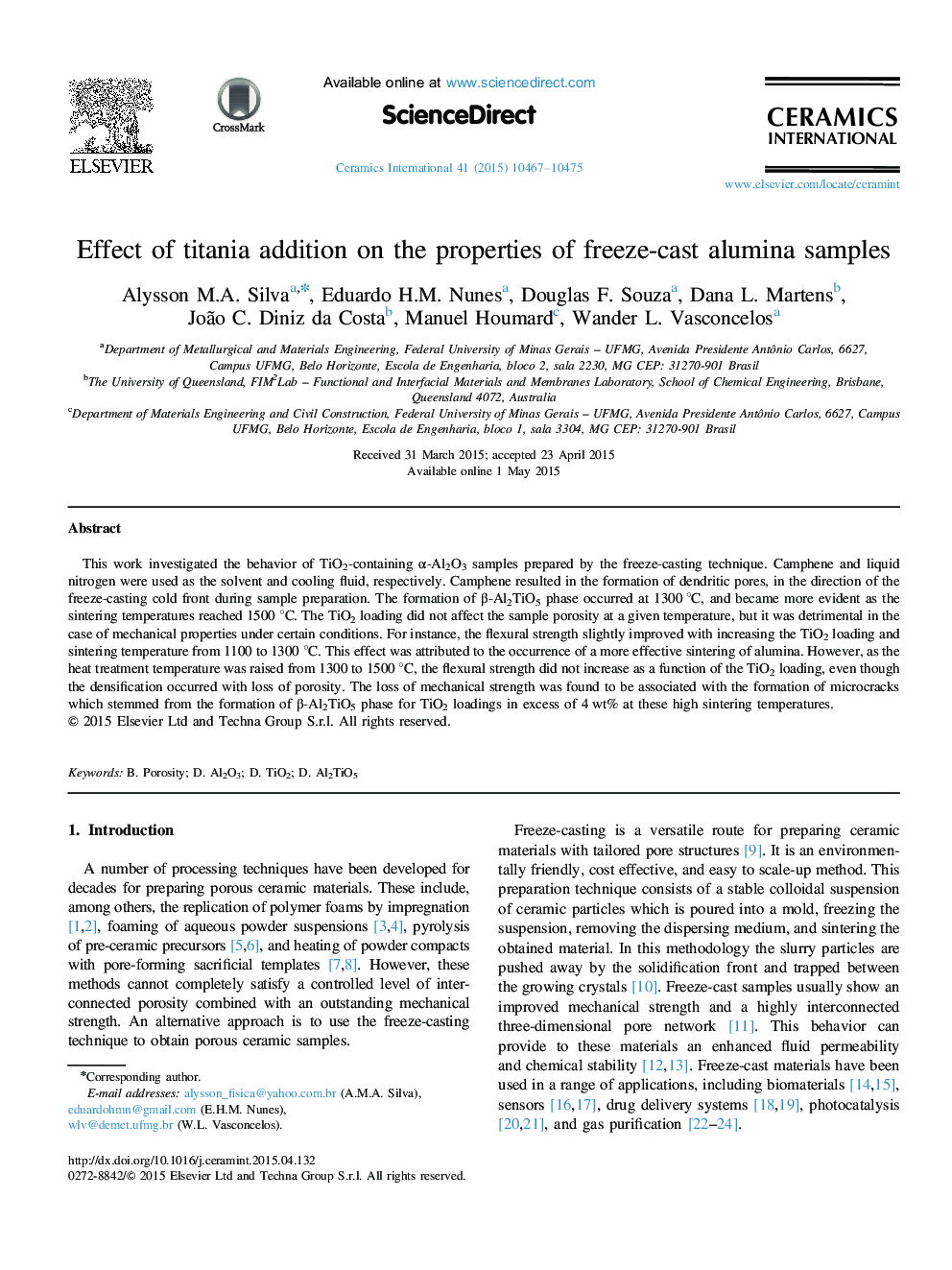| Article ID | Journal | Published Year | Pages | File Type |
|---|---|---|---|---|
| 1460001 | Ceramics International | 2015 | 9 Pages |
This work investigated the behavior of TiO2-containing α-Al2O3 samples prepared by the freeze-casting technique. Camphene and liquid nitrogen were used as the solvent and cooling fluid, respectively. Camphene resulted in the formation of dendritic pores, in the direction of the freeze-casting cold front during sample preparation. The formation of β-Al2TiO5 phase occurred at 1300 °C, and became more evident as the sintering temperatures reached 1500 °C. The TiO2 loading did not affect the sample porosity at a given temperature, but it was detrimental in the case of mechanical properties under certain conditions. For instance, the flexural strength slightly improved with increasing the TiO2 loading and sintering temperature from 1100 to 1300 °C. This effect was attributed to the occurrence of a more effective sintering of alumina. However, as the heat treatment temperature was raised from 1300 to 1500 °C, the flexural strength did not increase as a function of the TiO2 loading, even though the densification occurred with loss of porosity. The loss of mechanical strength was found to be associated with the formation of microcracks which stemmed from the formation of β-Al2TiO5 phase for TiO2 loadings in excess of 4 wt% at these high sintering temperatures.
